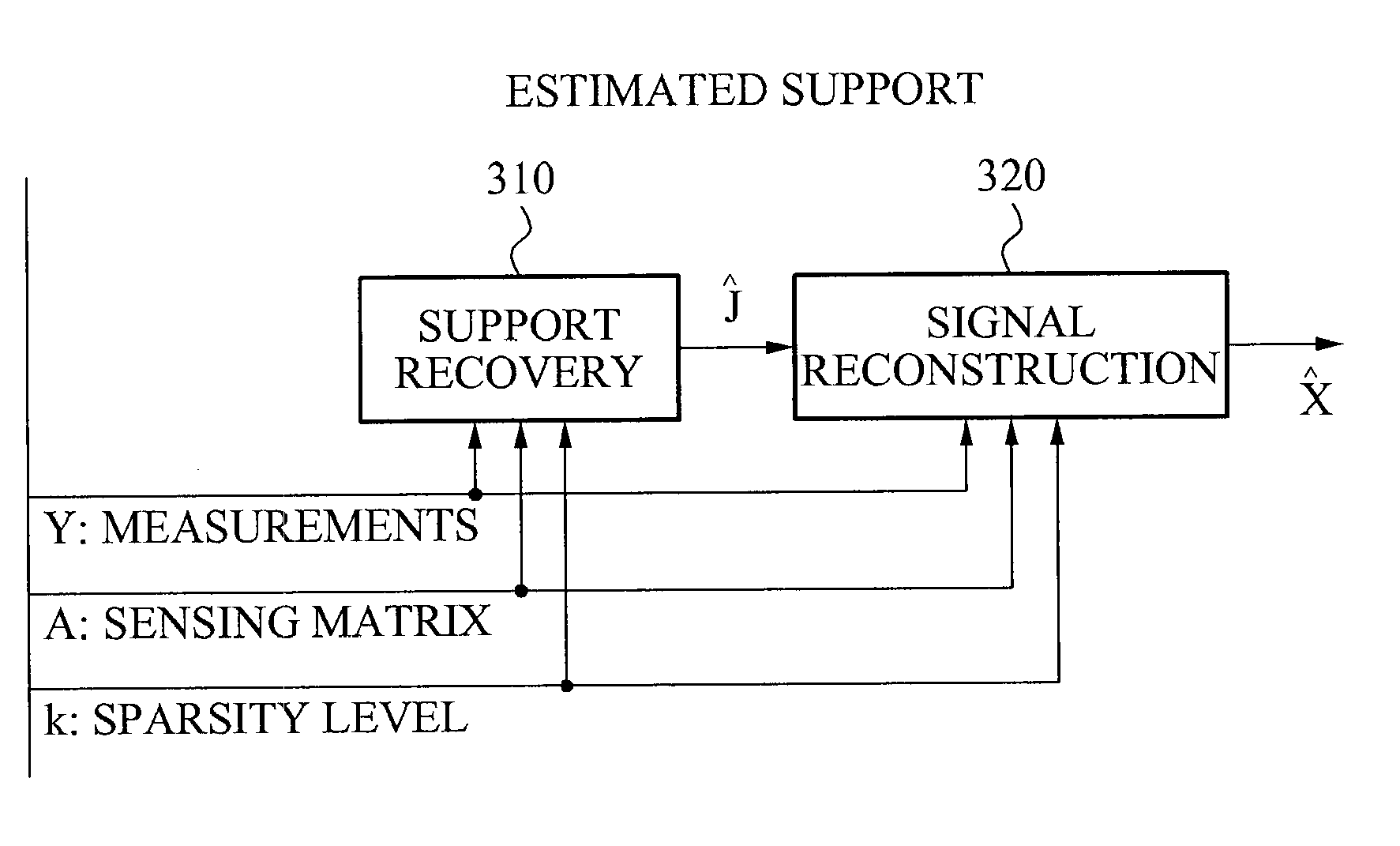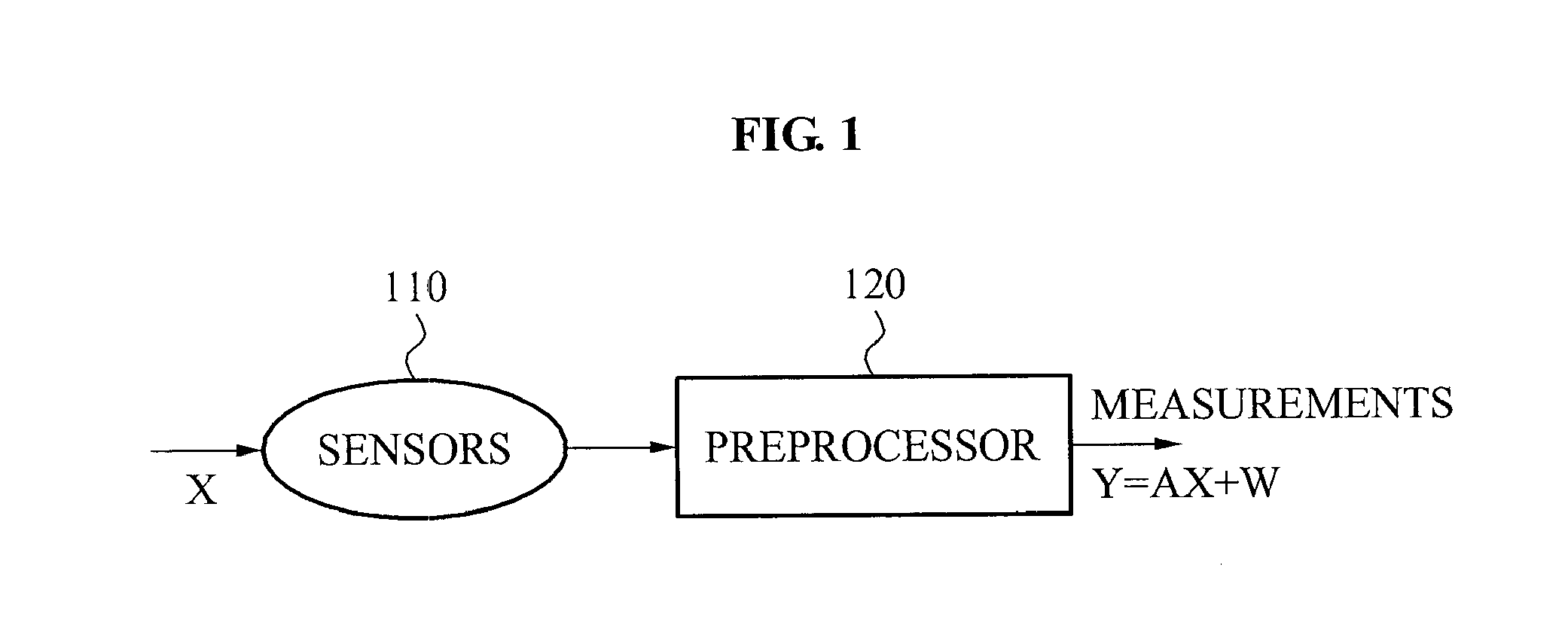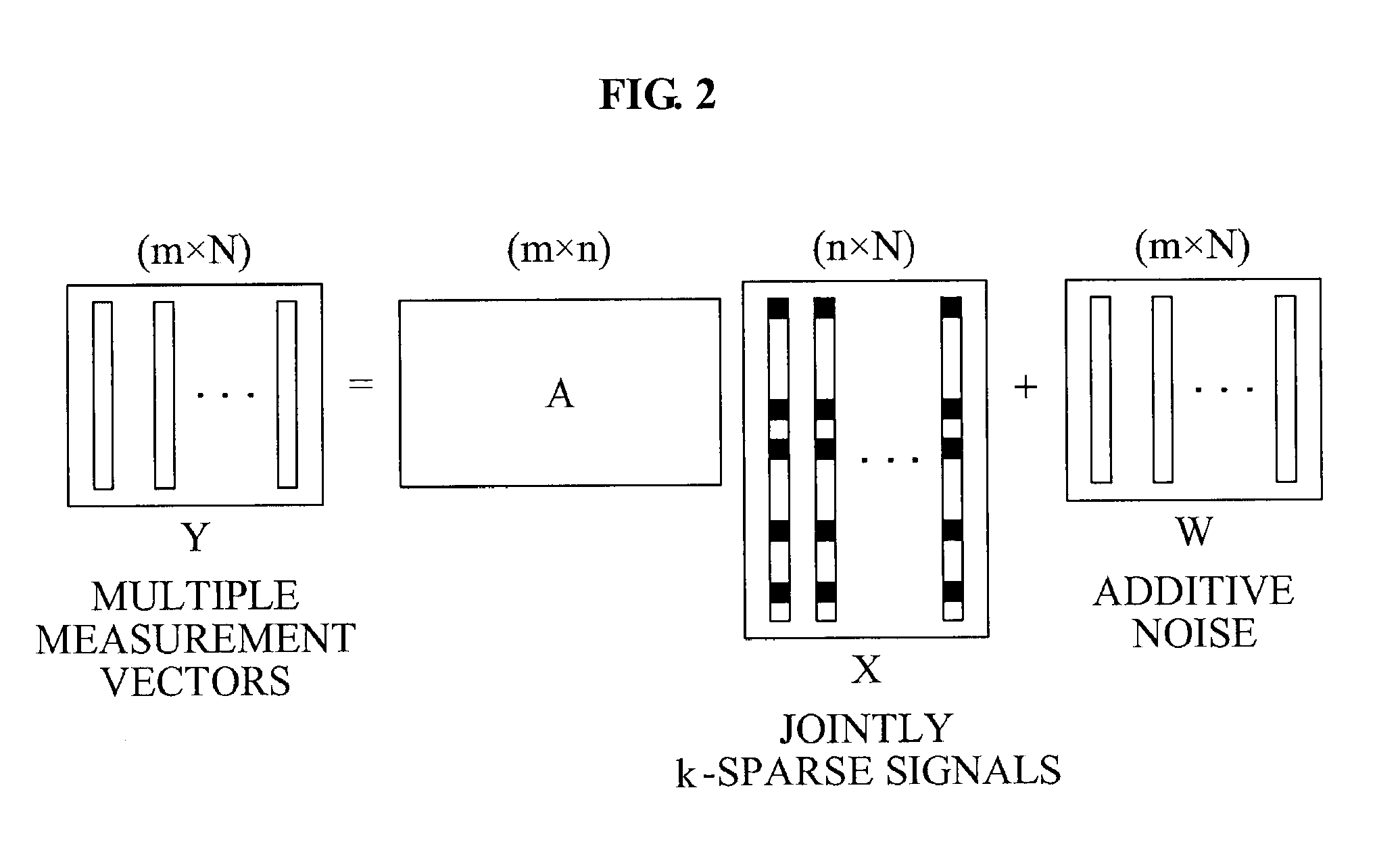Method and apparatus for compressed sensing with joint sparsity
a compressed sensing and joint sparsity technology, applied in the field of compressed sensing, can solve the problems of existing algorithms, weaker joint sparse recovery success rate, and inability to improve the success rate of joint sparse recovery
- Summary
- Abstract
- Description
- Claims
- Application Information
AI Technical Summary
Benefits of technology
Problems solved by technology
Method used
Image
Examples
Embodiment Construction
[0081]Reference will now be made in detail to exemplary embodiments of the present invention, examples of which are illustrated in the accompanying drawings, wherein like reference numerals refer to the like elements throughout. Exemplary embodiments are described below to explain the present invention by referring to the figures.
[0082]Real-valued signals and matrices may be used as an example. However, embodiments of the present invention may be equally applicable to complex-valued signals and matrices simply by replacing real numbers by complex numbers , and by replacing transpose T by Hermitian transpose H.
[0083]FIG. 1 is a diagram illustrating a process of obtaining measurements of jointly sparse signals using sensors 110 according to an embodiment of the present invention.
[0084]Specifically, FIG. 1 shows an example of a sensing system obtaining a plurality of measurements of jointly sparse signals.
[0085]Unknown jointly k-sparse signals may be arranged as columns of a matrix X ...
PUM
 Login to View More
Login to View More Abstract
Description
Claims
Application Information
 Login to View More
Login to View More - R&D
- Intellectual Property
- Life Sciences
- Materials
- Tech Scout
- Unparalleled Data Quality
- Higher Quality Content
- 60% Fewer Hallucinations
Browse by: Latest US Patents, China's latest patents, Technical Efficacy Thesaurus, Application Domain, Technology Topic, Popular Technical Reports.
© 2025 PatSnap. All rights reserved.Legal|Privacy policy|Modern Slavery Act Transparency Statement|Sitemap|About US| Contact US: help@patsnap.com



